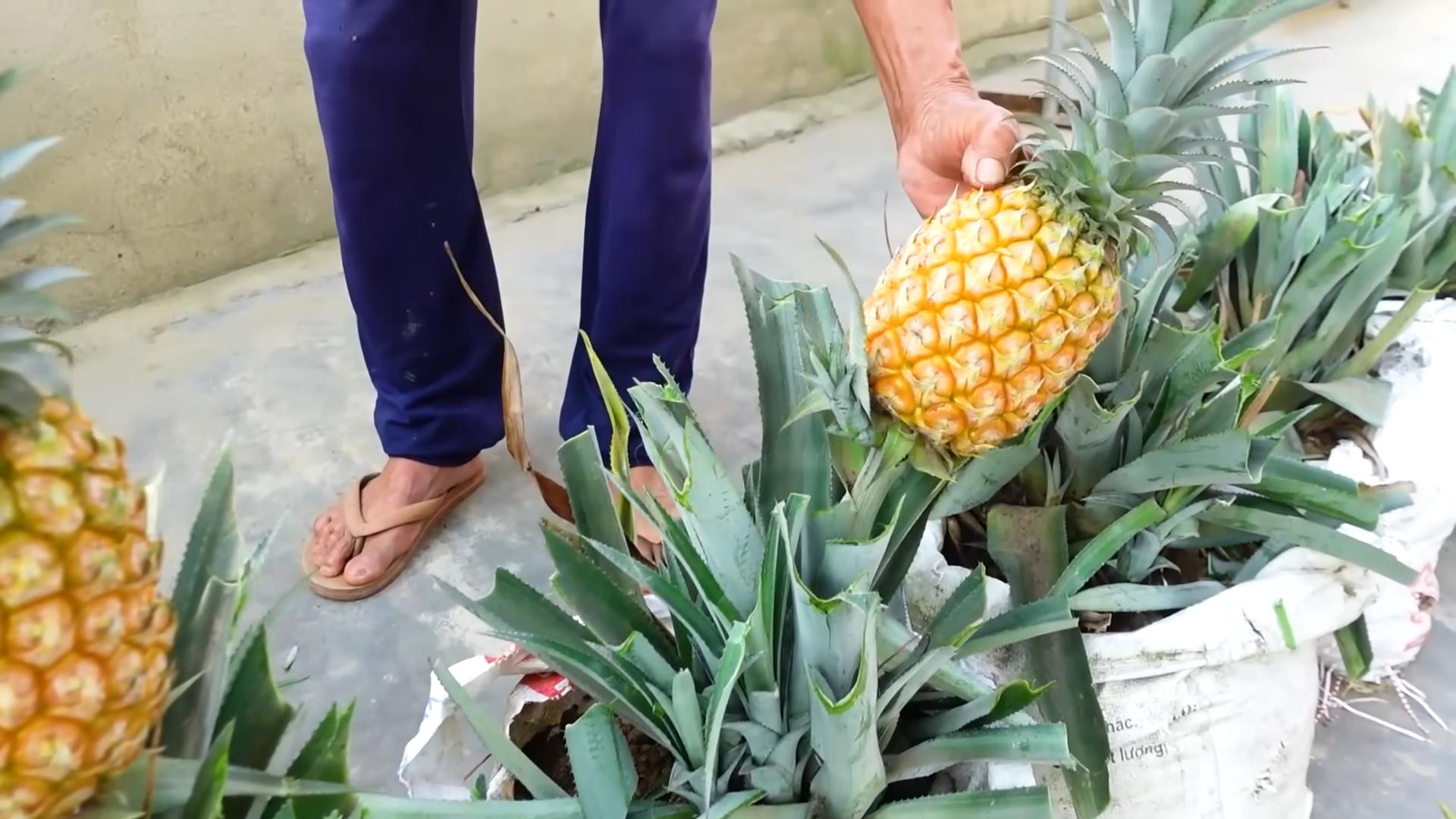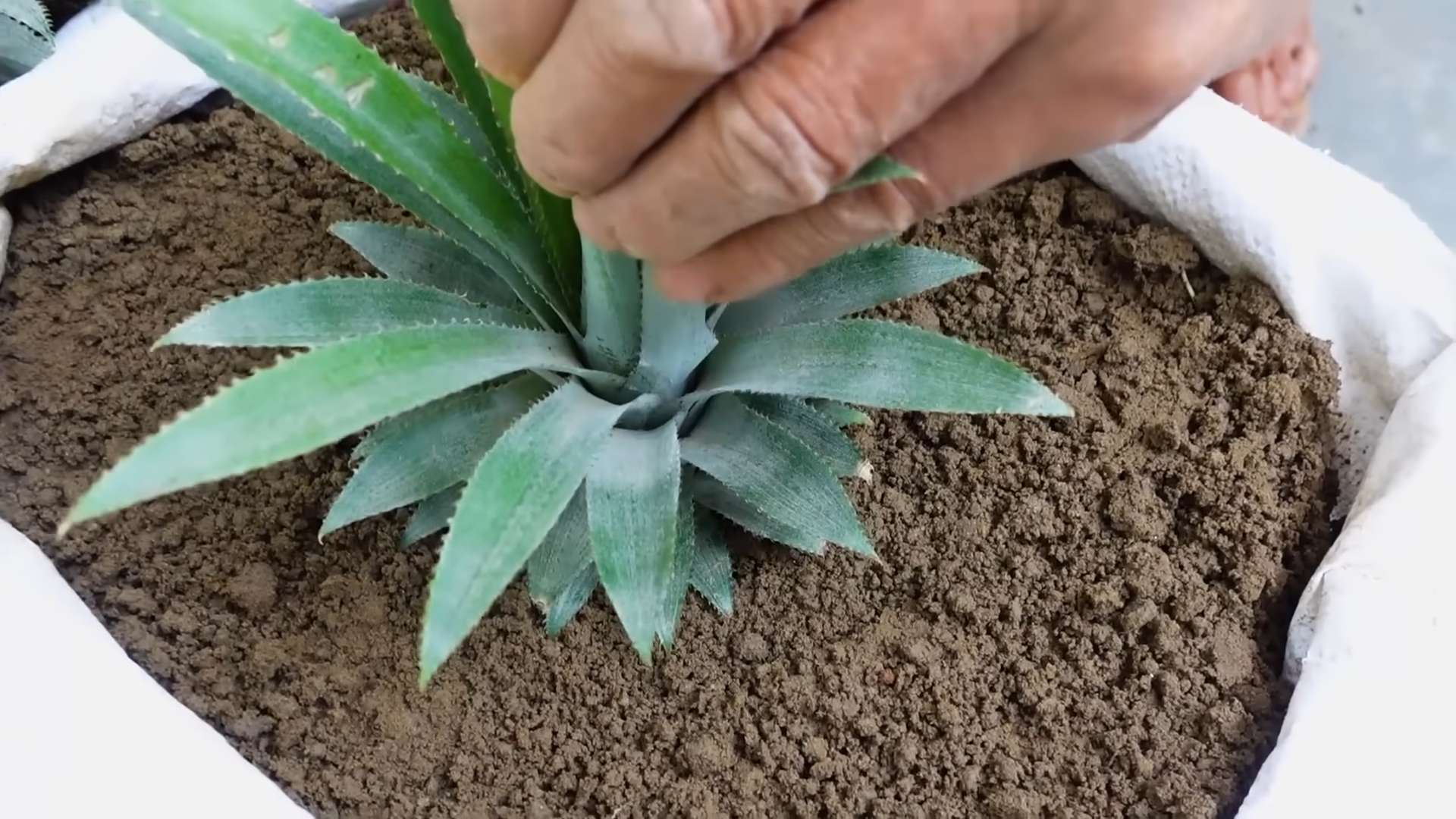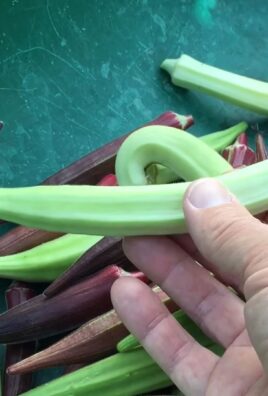Grow giant pineapples at home? Sounds like something out of a tropical fairytale, right? Well, get ready to turn that fairytale into your reality! I’m about to share some incredible DIY tricks and hacks that will have you harvesting impressively sized, juicy pineapples right from your own backyard (or even your balcony!).
For centuries, the pineapple has been a symbol of hospitality and luxury. Originating in South America, it was so prized that it was often displayed as a centerpiece at lavish feasts. Now, you can bring that same sense of abundance and exotic flair to your own home.
Let’s face it, store-bought pineapples can be expensive and sometimes lack that fresh, vibrant flavor we crave. Plus, there’s something incredibly satisfying about nurturing a plant from start to finish and enjoying the fruits (literally!) of your labor. This DIY guide will empower you to grow giant pineapples at home, save money, and impress your friends and family with your green thumb. I’ll walk you through every step, from selecting the right pineapple top to providing the perfect growing conditions. Get ready to embark on a fun and rewarding gardening adventure!

Grow Giant Pineapples at Home: A DIY Guide
Hey there, fellow plant enthusiasts! Ever dreamt of harvesting your own juicy, oversized pineapple? Well, dream no more! I’m going to walk you through a surprisingly simple DIY project that will have you growing giant pineapples right in your backyard (or even indoors!). It takes a little patience, but trust me, the reward is well worth it.
Choosing Your Pineapple Top
The first step to pineapple paradise is selecting the right starting material. You can’t just grab any pineapple from the grocery store and expect it to work. Here’s what to look for:
* Freshness is Key: Choose a pineapple that looks fresh and vibrant. Avoid pineapples with brown or wilted leaves, or soft spots on the fruit. The leaves should be a healthy green color.
* Healthy Leaves: Inspect the leaves carefully. They should be free from pests, diseases, and damage. A few minor blemishes are okay, but avoid pineapples with significant leaf problems.
* Ripe, but Not Overripe: The pineapple itself should be ripe, but not overly ripe. A slightly sweet smell is a good sign. Avoid pineapples that smell fermented or have a mushy texture.
* Variety Matters (Sort Of): While most pineapple varieties will work, some are naturally larger than others. If you can find out the variety, opt for one known for its size, like the ‘Smooth Cayenne’. However, don’t stress too much about this – any healthy pineapple top has the potential to grow a decent-sized fruit.
Preparing the Pineapple Top
Okay, you’ve got your pineapple. Now it’s time to prepare the top for planting. This is a crucial step, so pay close attention!
1. Twisting Off the Top: The easiest way to remove the top is to twist it off. Grip the base of the leaves firmly and twist the top away from the fruit. It might take a little effort, but it should come off cleanly. If twisting doesn’t work, you can use a sharp knife to carefully cut the top off, leaving about an inch of fruit attached.
2. Removing the Bottom Leaves: This is where things get a little more delicate. You need to remove the bottom few layers of leaves to expose the stem. Gently peel off the leaves, working your way around the base of the top. Aim to expose about 1-2 inches of the stem. This will be the part that roots, so you want it to be clean and free of any decaying leaf matter.
3. Letting it Callous: Once you’ve removed the bottom leaves, let the pineapple top sit out in a dry, well-ventilated place for a few days (3-7 days is ideal). This allows the cut end to callous over, which helps prevent rot when you plant it. Don’t skip this step! It’s essential for success. I usually put mine on a paper towel on a windowsill.
Rooting Your Pineapple Top
There are two main methods for rooting your pineapple top: in water or directly in soil. I prefer the water method because you can actually see the roots developing, which is super satisfying!
Rooting in Water
1. Choosing a Container: Select a clear glass or jar that’s wide enough to support the pineapple top and deep enough to hold a few inches of water.
2. Adding Water: Fill the container with fresh, clean water. Tap water is fine, but let it sit out for a day to allow any chlorine to evaporate.
3. Submerging the Stem: Place the pineapple top in the container, making sure that only the exposed stem is submerged in water. The leaves should be above the water line. You can use toothpicks inserted into the sides of the pineapple top to help suspend it if needed.
4. Finding the Right Spot: Place the container in a warm, bright location, but out of direct sunlight. A windowsill is usually a good choice.
5. Changing the Water: Change the water every few days to keep it fresh and prevent algae growth.
6. Waiting for Roots: Be patient! It can take several weeks (usually 2-8 weeks) for roots to develop. You should start to see small, white roots emerging from the stem. Once the roots are a few inches long, it’s time to plant your pineapple top in soil.
Rooting Directly in Soil
1. Choosing Your Pot and Soil: Select a pot that’s at least 6 inches in diameter and has good drainage holes. Use a well-draining potting mix. A mix of equal parts potting soil, perlite, and sand works well.
2. Planting the Top: Make a hole in the center of the pot and carefully plant the pineapple top, burying the exposed stem up to the base of the leaves.
3. Watering: Water the soil thoroughly after planting, but don’t overwater. The soil should be moist, but not soggy.
4. Finding the Right Spot: Place the pot in a warm, bright location, but out of direct sunlight.
5. Keeping it Moist: Keep the soil consistently moist, but not waterlogged. Check the soil moisture regularly and water when the top inch feels dry.
6. Waiting for Roots: It can take several weeks for roots to develop. You’ll know it’s rooted when you gently tug on the pineapple top and it resists being pulled out.
Planting and Growing Your Pineapple
Whether you rooted your pineapple top in water or directly in soil, the next step is planting it in a larger pot or in the ground (if you live in a warm climate).
1. Choosing the Right Pot (or Location): If you’re growing your pineapple in a pot, choose one that’s at least 12 inches in diameter. Pineapples need plenty of room to grow. If you live in a warm climate (USDA zones 9-11), you can plant your pineapple directly in the ground. Choose a sunny spot with well-draining soil.
2. Preparing the Soil: Pineapples prefer slightly acidic soil. You can amend your soil with compost, peat moss, or sulfur to lower the pH.
3. Planting the Pineapple: Carefully remove the pineapple from its original pot (if applicable) and plant it in the new pot or in the ground. Make sure the top of the root ball is level with the surrounding soil.
4. Watering: Water the pineapple thoroughly after planting.
5. Fertilizing: Pineapples are heavy feeders, so you’ll need to fertilize them regularly. Use a balanced fertilizer (e.g., 10-10-10) every 2-3 months during the growing season (spring and summer). Follow the instructions on the fertilizer package. You can also use a liquid seaweed fertilizer every few weeks.
6. Sunlight: Pineapples need at least 6 hours of sunlight per day. If you’re growing your pineapple indoors, place it near a sunny window or use a grow light.
7. Temperature: Pineapples thrive in warm temperatures (between 65°F and 85°F). Protect your pineapple from frost and freezing temperatures. If you live in a cold climate, you’ll need to bring your pineapple indoors during the winter.
8. Watering Schedule: Water your pineapple regularly, but don’t overwater. The soil should be moist, but not soggy. Allow the top inch of soil to dry out between waterings.
9. Pest Control: Pineapples can be susceptible to pests like mealybugs and scale. Inspect your pineapple regularly for pests and treat them promptly. You can use insecticidal soap or neem oil to control pests.
10. Encouraging Fruiting: This is the trickiest part! Pineapples don’t always fruit readily, especially when grown indoors. To encourage fruiting, you can try the following:
* Ethylene Gas: Ethylene gas is a plant hormone that promotes flowering. You can expose your pineapple to ethylene gas by placing a ripe apple or banana near the plant and covering it with a plastic bag for a few days. The ripening fruit will release ethylene gas, which can trigger flowering.
* Magnesium Sulfate (Epsom Salts): Epsom salts can help promote flowering. Dissolve 1 tablespoon of Epsom salts in 1 gallon of water and use it to water your pineapple every few weeks.
* Patience: Sometimes, all it takes is patience. Pineapples can take 1-3 years to fruit, so don’t give up!
Harvesting Your Pineapple
After all your hard work, the moment you’ve been waiting for has finally arrived: harvesting your pineapple!
1. Signs of Ripeness: A ripe pineapple will have a strong, sweet aroma. The skin will turn from green to yellow or orange. The fruit will also feel slightly soft to the touch.
2. Harvesting: Use a sharp knife to cut the pineapple from the plant. Leave a few inches of stem attached to the fruit.

Conclusion
So, there you have it! Growing giant pineapples at home isn’t just a whimsical dream; it’s an achievable reality with a little patience, the right techniques, and a whole lot of sunshine. We’ve walked you through the process, from selecting the perfect pineapple top to nurturing your plant to its full, glorious potential. But why should you embark on this tropical adventure?
First and foremost, the satisfaction of harvesting a pineapple you’ve personally cultivated is unparalleled. Imagine the look on your friends’ and family’s faces when you present them with a homegrown, extra-large pineapple, bursting with flavor and sweetness. It’s a conversation starter, a testament to your green thumb, and a delicious reward all rolled into one.
Beyond the bragging rights, growing your own pineapples offers a unique connection to your food. You control the growing environment, ensuring that your pineapple is free from harmful pesticides and chemicals. You’ll also gain a deeper appreciation for the time and effort that goes into producing this tropical fruit.
But the benefits don’t stop there. Pineapple plants are beautiful additions to any garden or indoor space. Their spiky, architectural foliage adds a touch of the tropics to your surroundings, creating a vibrant and inviting atmosphere. Plus, they’re relatively low-maintenance, making them a perfect choice for both experienced and novice gardeners.
Now, let’s talk about variations. While we’ve focused on growing giant pineapples, you can certainly adapt these techniques to cultivate smaller, more manageable varieties. Consider experimenting with different types of pineapples, such as the Sugarloaf or the Red Spanish, to discover your favorite flavor profile. You can also explore different growing mediums, such as hydroponics or aquaponics, for a more sustainable and efficient approach.
Another exciting variation is to focus on maximizing the sweetness of your pineapple. This can be achieved by providing your plant with optimal sunlight, consistent watering, and a balanced fertilizer. You can also try “stressing” your pineapple plant slightly by withholding water for a short period before harvest, which can concentrate the sugars and enhance the flavor.
Don’t be afraid to experiment and adapt these techniques to suit your specific climate and growing conditions. The key is to be patient, observant, and willing to learn from your mistakes. Remember, gardening is a journey, not a destination.
We wholeheartedly encourage you to give this DIY trick a try. Growing giant pineapples at home is a rewarding and enriching experience that will bring joy and deliciousness to your life. And once you’ve harvested your first homegrown pineapple, we want to hear all about it! Share your photos, tips, and experiences with us in the comments below. Let’s create a community of pineapple enthusiasts and inspire others to embark on this tropical adventure.
So, grab a pineapple top, gather your supplies, and get ready to grow your own giant pineapple. You won’t regret it!
Frequently Asked Questions (FAQ)
What kind of soil is best for growing pineapples?
Pineapples thrive in well-draining, slightly acidic soil. A mix of equal parts potting soil, perlite, and peat moss is a good starting point. The key is to ensure that the soil doesn’t retain too much water, as this can lead to root rot. You can also amend your soil with organic matter, such as compost or well-rotted manure, to improve its fertility and drainage. Consider testing your soil’s pH level and adjusting it accordingly to achieve a slightly acidic range (around 6.0-6.5).
How long does it take to grow a giant pineapple from a top?
Patience is key! It typically takes anywhere from 2 to 3 years to grow a pineapple from a top. The exact timeframe will depend on various factors, including the variety of pineapple, the climate, and the growing conditions. Don’t be discouraged if your plant seems to be growing slowly at first. With proper care and attention, it will eventually reward you with a delicious, homegrown pineapple.
How often should I water my pineapple plant?
Water your pineapple plant regularly, especially during the growing season (spring and summer). Allow the soil to dry out slightly between waterings. Overwatering can lead to root rot, so it’s important to avoid soggy soil. In the fall and winter, reduce watering frequency as the plant’s growth slows down. A good rule of thumb is to water thoroughly when the top inch of soil feels dry to the touch.
What kind of fertilizer should I use for my pineapple plant?
Pineapples are heavy feeders and benefit from regular fertilization. Use a balanced fertilizer with a ratio of 10-10-10 or 14-14-14. Apply the fertilizer according to the package instructions, typically every 2-3 months during the growing season. You can also supplement with foliar feeding, using a diluted liquid fertilizer sprayed directly onto the leaves. Avoid over-fertilizing, as this can burn the roots and damage the plant.
How much sunlight does a pineapple plant need?
Pineapples need plenty of sunlight to thrive. Aim for at least 6-8 hours of direct sunlight per day. If you’re growing your pineapple indoors, place it near a sunny window or supplement with artificial grow lights. Insufficient sunlight can result in stunted growth and reduced fruit production.
How do I encourage my pineapple plant to flower and fruit?
Getting your pineapple plant to flower can sometimes be tricky. One common method is to expose the plant to ethylene gas, which can be produced by placing a ripe apple near the plant inside a plastic bag for a few days. The ethylene gas will stimulate the plant to flower. You can also purchase ethylene-releasing products specifically designed for this purpose. Ensure your plant is mature enough (at least 2-3 years old) and has received adequate sunlight, water, and fertilizer before attempting to induce flowering.
What are some common pests and diseases that affect pineapple plants?
Pineapple plants can be susceptible to various pests and diseases, including mealybugs, scale insects, and root rot. Regularly inspect your plant for signs of infestation or disease. Mealybugs and scale insects can be treated with insecticidal soap or neem oil. Root rot is caused by overwatering and can be prevented by ensuring proper drainage and avoiding soggy soil. If you suspect root rot, repot your plant in fresh, well-draining soil.
Can I grow pineapples indoors?
Yes, you can grow pineapples indoors, but it requires providing them with the right conditions. Ensure your plant receives plenty of sunlight, either from a sunny window or artificial grow lights. Maintain a warm and humid environment, and water regularly, allowing the soil to dry out slightly between waterings. Choose a pot that is large enough to accommodate the plant’s root system, and use a well-draining potting mix.
How do I know when my pineapple is ripe?
Determining when a pineapple is ripe can be challenging, but there are a few telltale signs. The pineapple should have a vibrant color, ranging from green to yellow, depending on the variety. The fruit should also have a sweet, fragrant aroma. Gently tug on one of the leaves; if it comes off easily, the pineapple is likely ripe. You can also tap the pineapple; a ripe pineapple will have a dull, hollow sound.
What can I do with the pineapple after I harvest it?
Once you’ve harvested your homegrown pineapple, the possibilities are endless! Enjoy it fresh, grilled, or juiced. Use it in smoothies, salads, or desserts. You can also preserve it by canning, freezing, or dehydrating it. And don’t forget to save the top to start growing another pineapple plant!





Leave a Comment